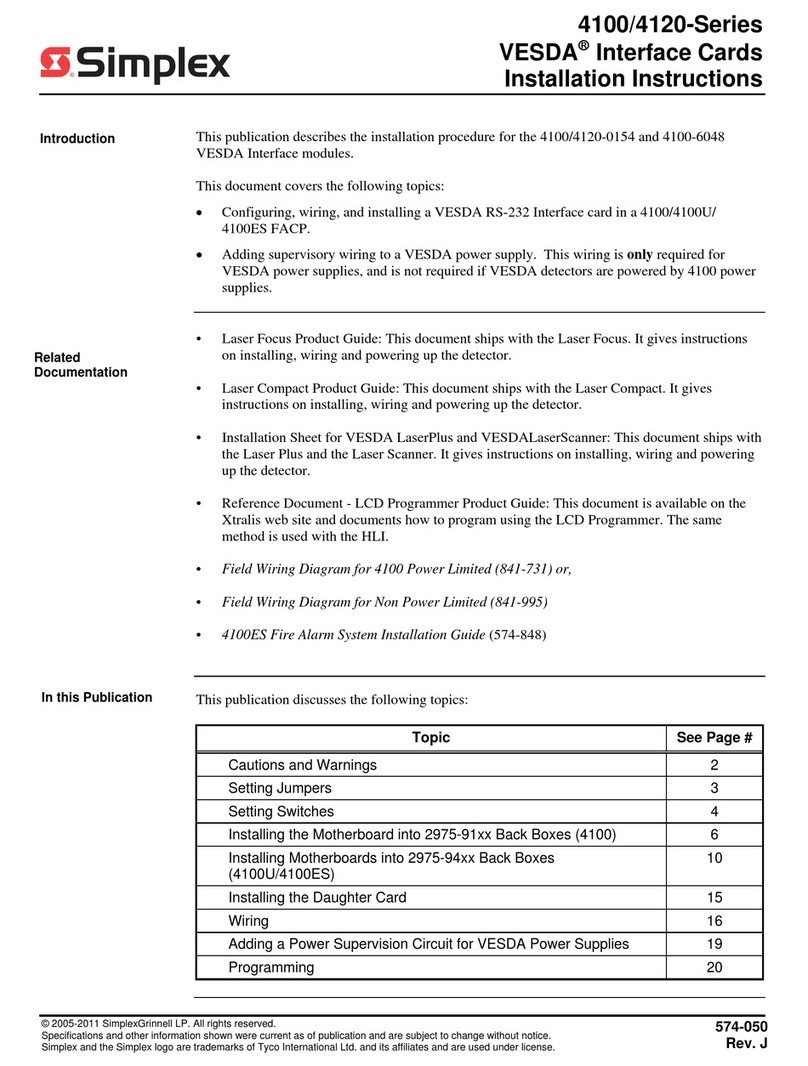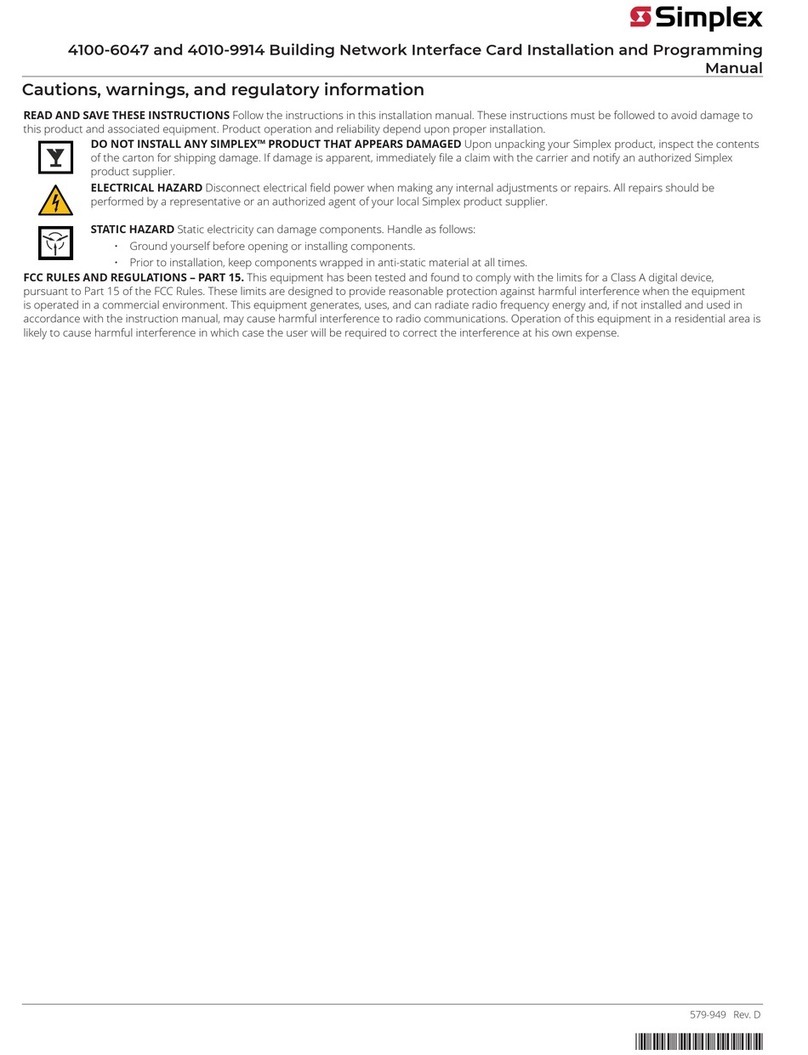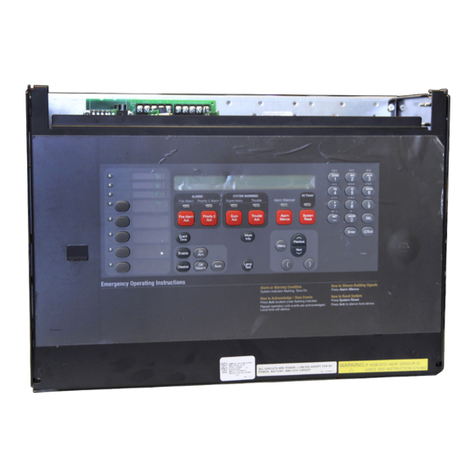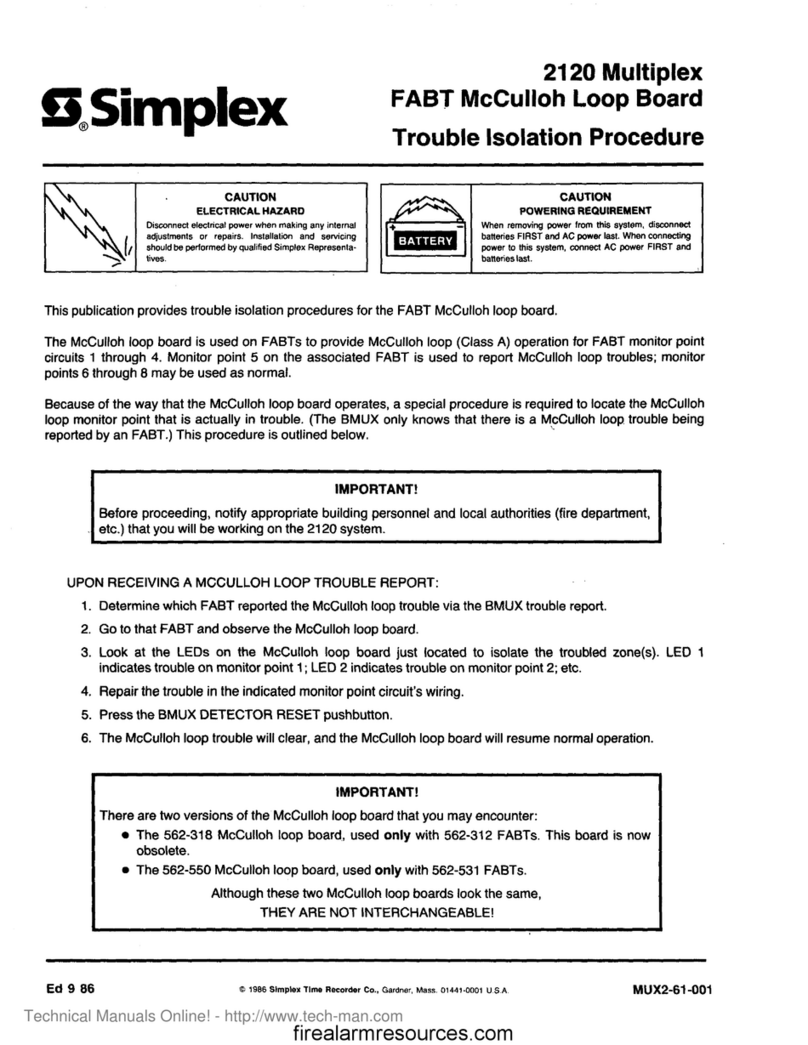
TFX Audio Interface Module
Installation Instructions
4100-1340,
©2007- 2011 SimplexGrinnell LP. All rights reserved.
Specifications and other information shown were current as of publication and are subject to change without notice.
Simplex and the Simplex logo and AUTOCALL are trademarks of Tyco International Ltd. and its affiliates and are used under license.
579-815
Rev. C
Introduction The 4100-1340 TFX Audio Interface module converts 10 Vrms 4100U or 4100ES analog outputs
into 0.77 Vrms signals compatible with the AUTOCALL® AMP-96 audio riser. During a TFX-
500 or TFX-800 to 4100U or 4100ES master panel migration, the TFX Audio Interface module
provides a means to retain existing AMP-96 speaker circuits.
This publication covers the installation procedure of the TFX Audio Interface module into a
4100U or 4100ES Master control panel.
In this
Publication This publication discusses the following topics:
Cautions
and
Warnings
READ AND SAVE THESE INSTRUCTIONS- Follow the instructions in this installation manual. These instructions must be
followed to avoid damage to this product and associated equipment. Product operation and reliability depend upon proper
installation.
DO NOT INSTALL ANY SIMPLEX® PRODUCT THAT APPEARS DAMAGED- Upon unpacking your Simplex product,
inspect the contents of the carton for shipping damage. If damage is apparent, immediately file a claim with the carrier and notify
an authorized Simplex product supplier.
ELECTRICAL HAZARD - Disconnect electrical field power when making any internal adjustments or repairs. All repairs should
be performed by a representative or authorized agent of your local Simplex product supplier.
STATIC HAZARD - Static electricity can damage components. Handle as follows:
• Ground yourself before opening or installing components.
• Prior to installation, keep components wrapped in anti-static material at all times.
EYE SAFETY HAZARD - Under certain fiber optic application conditions, the optical output of this device may exceed eye
safety limits. Do not use magnification (such as a microscope or other focusing equipment) when viewing the output of this device.
FCC RULES AND REGULATIONS – PART 15 - This equipment has been tested and found to comply with the limits for a Class A digital
device pursuant to Part 15 of the FCC Rules. These limits are designed to provide reasonable protection against harmful interference when the
equipment is operated in a commercial environment. This equipment generates, uses, and can radiate radio frequency energy and, if not installed
and used in accordance with the instruction manual, may cause harmful interference to radio communications. Operation of this equipment in a res-
idential area is likely to cause harmful interference in which case the user will be required to correct the interference at his own expense.
SYSTEM REACCEPTANCE TEST AFTER SOFTWARE CHANGES - To ensure proper system operation, this product must be tested in
accordance with NFPA-72, after any programming operation or change in site-specific software. Reacceptance testing is required after any change,
addition or deletion of system components, or after any modification, repair or adjustment to system hardware or wiring.
All components, circuits, system operations, or software functions known to be affected by a change must be 100% tested. In addition, to ensure that
other operations are not inadvertently affected, at least 10% of initiating devices that are not directly affected by the change, up to a maximum of 50
devices, must also be tested and proper system operation verified.
Topic See Page
Overview 2
Introduction to TFX Audio Interface Module 3
Installing the TFX Audio Interface Module 7

































